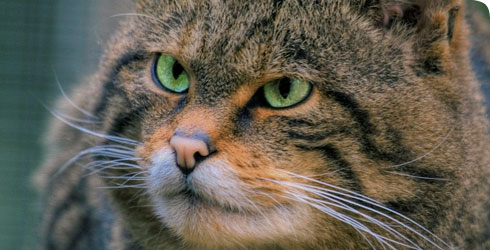Felis silvestris grampia (Scottish wildcat)
Felis silvestris grampia looks rather like a domestic cat, but is larger and more robust. It is solitary and territorial - territories can be up to 14 square kilometres.
The Scottish wildcat is a protected species, but there may be as few as 400 individuals left in the Scottish highlands, where hybridisation with feral cats is common.
The wildcats' distinctive tails are bushy and ringed with blunt, black tips. Their coats are thick, dark, striped and heavily marked.
The domestic cat was derived from the African wildcat - a close relative of Felis silvestris grampia - 4,000–8,000 years ago.
Species detail
-

Morphology and evolution
Felis silvestris grampia looks like a domestic cat, but is larger and more robust. Indeed, the domestic cat’s ancestor - the African wildcat - is a close relative. Find out more.
-

Distribution
There may be fewer than 400 Scottish wildcats left in the wild. Find out where you might see one, and what they eat.
-

Biology
Discover more about this cat’s breeding habits and life-span, and how it cares for its kittens.
-

Behaviour
Felis silvestris grampia is a solitary and territorial cat. Find out about their territories and how far they travel.
-

Threats
The Scottish wildcat is a protected species, but numbers are still declining. Find out what threatens its survival today.
Images
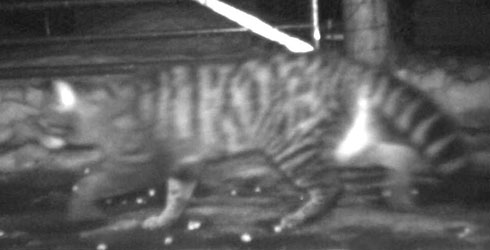
Scottish wildcat caught on camera in January 2010.
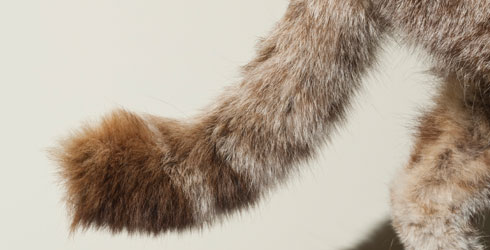
Felis silvestris grampia tails are bushy and have blunt tips.
© Natural History Museum, London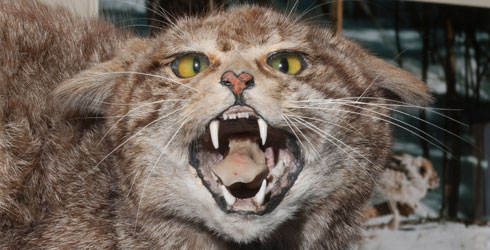
Felis silvestris grampia specimen.
© Natural History Museum, London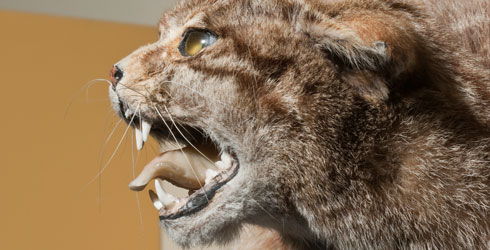
Felis silvestris grampia specimen.
© Natural History Museum, London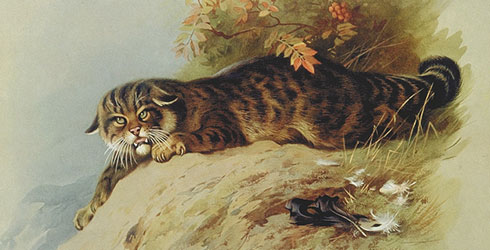
Felis silvestris grampia illustration.
© Natural History Museum, London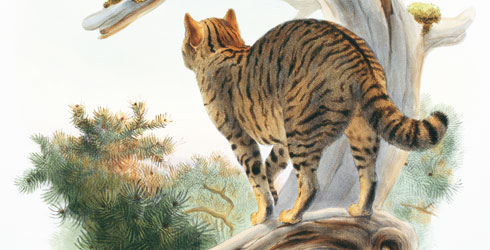
Felis silvestris grampia illustration.
© Natural History Museum, London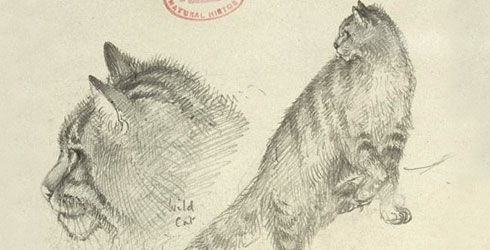
Felis silvestris grampia illustration.
© Natural History Museum, London
Felis silvestris grampia specimen.
© Natural History Museum, LondonDistribution
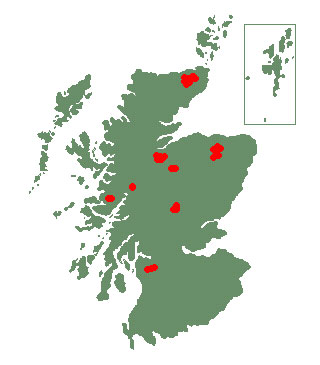
Distribution of Felis silvestris grampia © Royal Zoological Society Scotland
About the authors
Amy Cox
Education Officer
Edinburgh Zoo
Royal Zoological Society of Scotland
A word from the author, Amy Cox
"A large part of my job is to increase awareness of native species.
The Scottish wildcat is an amazing animal and is only found in Scotland. Stories of these cats have been around for centuries, woven into the rich Scottish culture and I believe it would be a massive loss if we allowed them to die out. They are rarer than tigers and yet so few people have heard of them. I hope that by having them as the species of the day, we can start to change this and save our last wild cat."
